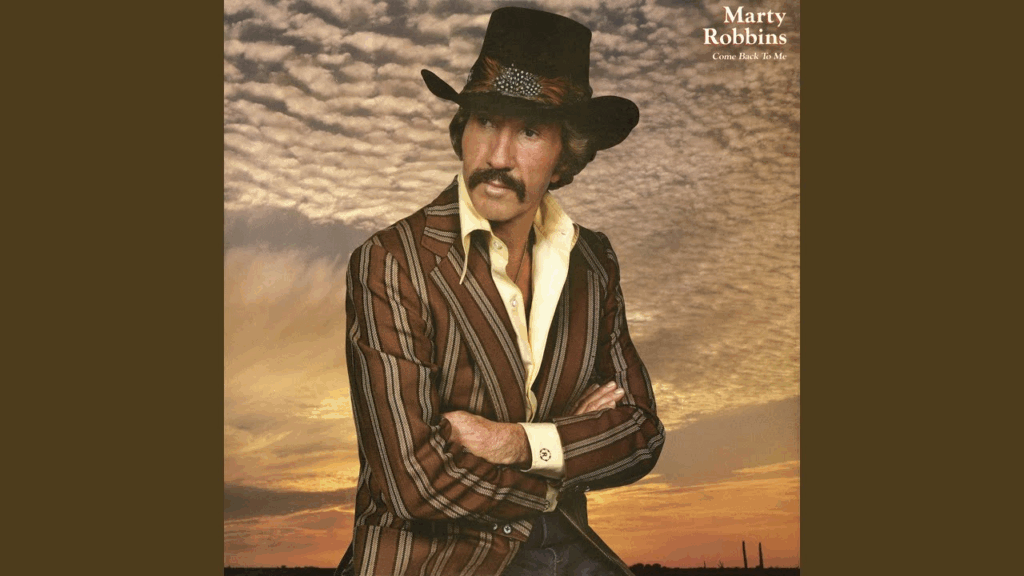
Marty Robbins -“Maybellene”: A Country Crooner’s Unexpected Detour to the Dawn of Rock and Roll
Ah, the 1950s—a time when the American musical landscape was shifting beneath our very feet, a glorious, sometimes unsettling rumble of change. For those of us who came of age during that era, the memory of Marty Robbins often conjures up images of dusty Western trails, poignant cowboy ballads like “El Paso,” or perhaps the smooth, easy listening of “A White Sport Coat (and a Pink Carnation).” But tucked away in his remarkable, genre-spanning discography is a fascinating little entry, a surprising detour that perfectly captures the crossroads where country and rock and roll first collided: his 1955 recording of “Maybellene.”
Now, before we delve into Robbins’ take, it’s vital to remember the song’s true origin. “Maybellene” is, of course, the electrifying debut single by the founding father of rock and roll, Chuck Berry. Berry’s original, a white-hot narrative of a V8 Ford chasing a Cadillac Coupe DeVille—a classic tale of cars, speed, and romantic pursuit—was a monumental smash, a true crossover hit that blazed onto the R&B, Pop, and even the Country and Western charts. It was a pivotal moment, a defining track in the birth of a new sound.
It was this very energy and undeniable appeal that led Columbia Records to have their rising star, Marty Robbins, a smooth-voiced artist firmly rooted in country, record a cover. Released in August 1955, close on the heels of the original, Marty Robbins’ “Maybellene” immediately found traction in the market. It was a shrewd, yet telling move by the record labels of the time, who often sought to have established country or pop artists cover “race records” (R&B songs) to reach a wider, predominantly white audience. But for us listeners, it wasn’t about the industry maneuvering; it was about the irresistible beat. Robbins’ version, while leaning into a country-western arrangement, retained that infectious, bright, and bouncy rhythm. It successfully climbed the charts, peaking impressively at Number 9 on the Billboard Country & Western Most Played by Jockeys chart. This achievement wasn’t just a number; it cemented the idea that the pulsing new rhythm of rock and roll was no mere fad—it was beginning to seep into the very bedrock of American music, even within the hallowed halls of country.
For a singer known for the contemplative sorrow of songs like “Singing the Blues,” taking on the raw, exuberant energy of a track about a hot rod race was a delightful anomaly. It showcases Robbins’ often-underappreciated versatility and, frankly, his excellent taste in a catchy tune. He brought his distinct vocal clarity and polished delivery to the song, which contrasted sharply with Berry’s more raw, signature style. It was a bridge—a way for country fans who might have been hesitant about the wilder sounds coming out of the R&B world to dip their toes into the rockabilly and rock and roll stream.
Listening to Marty Robbins’ “Maybellene” now is more than just appreciating a great song; it’s an act of time travel. It transports us back to a time when genres were becoming wonderfully blurred, when the radio dial offered a dizzying array of sounds, and when a singer could move seamlessly from a plaintive western ballad to a high-octane song about a car chase without missing a beat. For us older listeners, it’s a nostalgic reminder of how quickly the world, and especially its music, could change. It’s a moment of cultural history captured on wax, a testament to the fact that even the most traditional artists knew a groundbreaking hit when they heard one, and that good music, no matter its origin, always finds a way to move your feet. It stands as a vibrant, if often overshadowed, footnote to the career of a true legend, and a fascinating chapter in the evolution of American popular music.